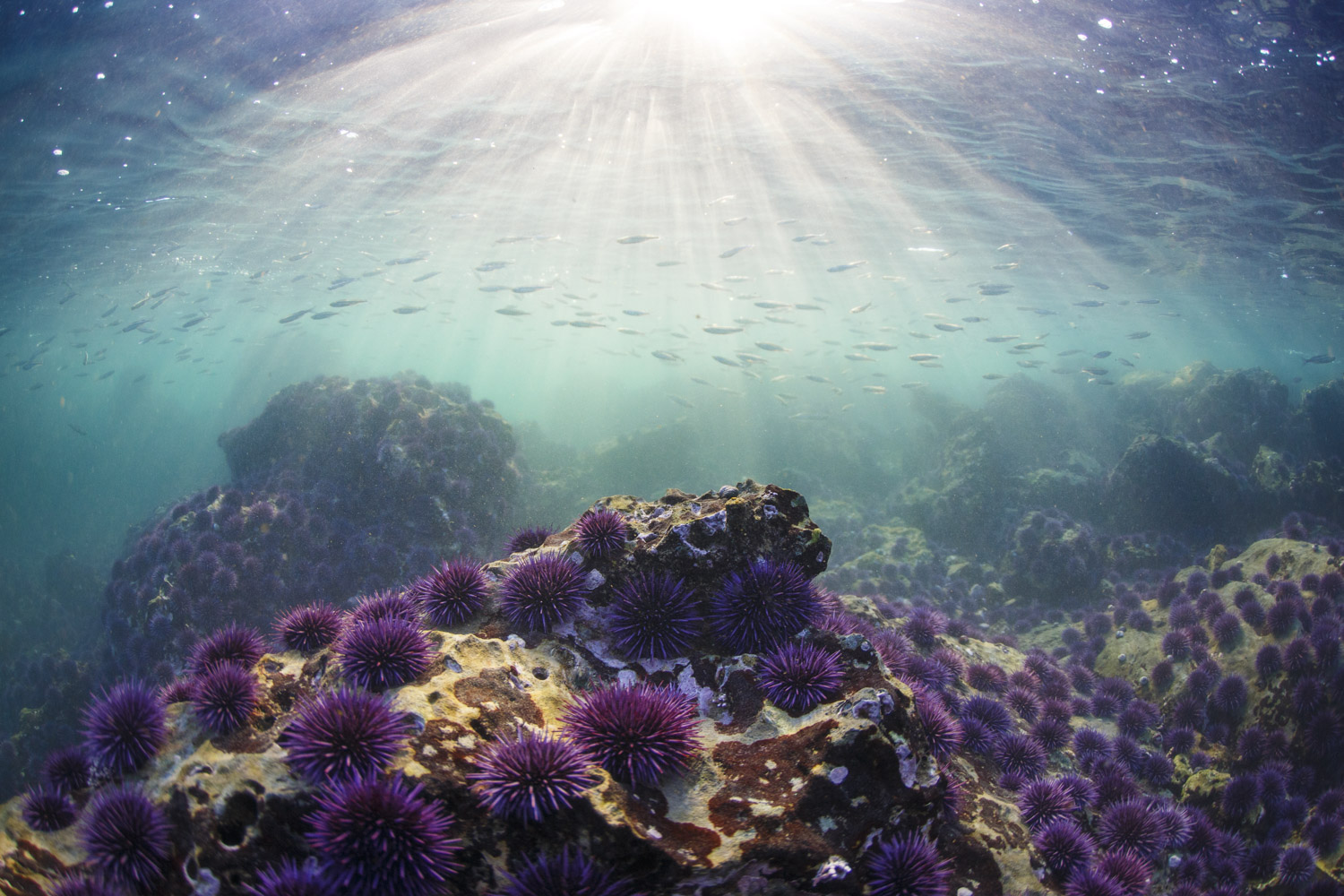
Urchin Barren. November 2020
The next morning, I stopped by Coal Oil Point hoping to snorkel it again with better visibility than last time. The forecasts showed the swell being only 0.5ft, but when I got out of my car, I knew the swell was much bigger without even seeing the waves; I could distinguish the decibels of the waves crashing just by ear. With no zoom lens and no handplane, I was forced to stare and salivate at the offshore surf and dolphins in the lineup. Maybe I should have brought the kitchen sink? Oh well, it doesn’t matter anyway. I met up with an old colleague for a socially distanced lunch, staring at more perfect waves. Not feeling content that my camera hasn’t been used, I booked it further south to a tide pool spot I had in mind before sundown. After a quick scope of the area, my eyes light up when I found a protected trench with sea urchins lined up the sides of the rocks. The water was surprisingly clear. Another debate ensued, was I going to just sit and stare again? I had maybe 30 minutes of light left, and this was my only chance at this spot for the trip. I raced back to car, suited up and jumped in. Immediately I saw the entire floor was covered in purple urchin. While displeasing knowing why it was an urchin barren, the colors still amaze me. Bait fish surrounded me, and I spotted some shy Garibaldi in the rocks. As the light faded, the tide rising, I quickly maneuvered around trying to get a few decent photos. Shooting tide pools is one the most challenging forms of photography I have yet experienced. The extreme levels of light, dark underneath and bright over, strong current, waves, visibility, and virtually unlimited ways to compose an image, made most of my photos unpresentable. When one turns out though, I can stare at it indefinitely.